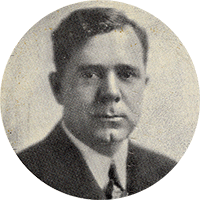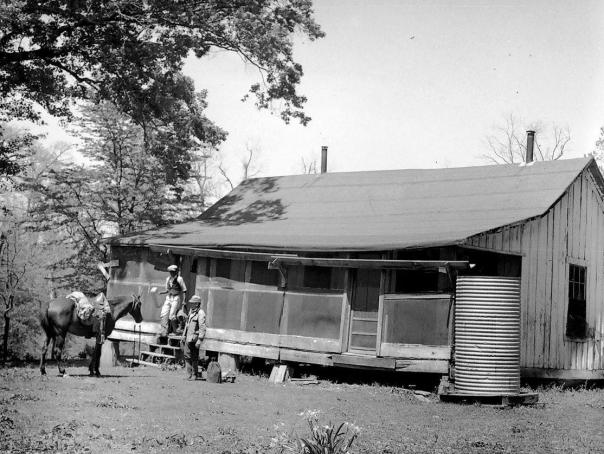
Family of box factory worker, Roseland, La., 1938. ~ Courtesy of LSU Libraries Special Collections.
Prior to Huey Long’s administration, the cost of living in Louisiana was high for everyone, especially Louisiana’s poor majority. Individuals were required to pay for everything the state did not provide – education for their children, tolls for ferry crossings where no bridges existed, annual fees required for the privilege of voting, and taxes on every form of personal property.
The disenfranchised poor eked out a meager existence, doing without the necessities that would provide a better quality of life, and paying taxes every year for services they never received. To add insult to injury, unregulated utilities and businesses charged top dollar for basic goods and services. At the onset of the Great Depression, already desperate families risked losing what little they had.

One dollar in 1930 is equivalent to about 19 dollars today (based on the 2025 Consumer Price Index)
Long shifted the public’s perception of what they should expect from their government. The state soon provided free education, roads, bridges, and infrastructure and reduced burdensome property taxes, fees, and utility rates. By 1936, the average family saved more than $425 a year in living expenses (or $8,075 in 2025 dollars), which enabled hundreds of thousands of citizens to invest in a better future.
With the state providing free schools, buses, and textbooks, the average family with three children saved $30 a year on books alone (or $570 in 2025). Individual parishes no longer taxed residents to maintain the few public schools that previously existed, and higher education tuition was reduced as the state’s public universities tripled enrollment.
The free hard-surfaced roads and bridges saved the average family $150 a year in tolls and ferries (equivalent to $2,850 in 2025). Reduced gas consumption and wear-and-tear saved car owners another $118 a year (or $2,242 in 2025).
Personal property taxes were reduced by the ‘Homestead Exemption’, which eliminated taxes on every household’s first $2,000 of property. In 1928, most homes were worth less than $2,000, saving the average family $65 annually (or $1,235 in 2025). Eighty percent of all homeowners paid no personal property taxes under the new system. (The Homestead Exemption remains a popular tax exemption in Louisiana.)

"This is Mrs. Berry Hall. For 10 years she worked at the factory in Roseland and made 10 cents an hour. Now she is married, unable to work, and supported by a husband who makes only a few cents more than she did." ~ Courtesy of LSU Libraries Special Collections.
Automobile license fees were slashed. Rates on trucks were cut from $28 to $3, and rates on cars fell from $15 to $6. Personal property taxes on cars were eliminated. The average farmer saved $20 a year ($380 in 2025), and the average family saved $9 (or $171 in 2025).
The poll tax was eliminated, allowing individuals to vote without paying the required fee of $2 ($38 in 2025) over two years. This tax, which was due every Christmas, prevented a whole class of citizens from participating in the elective process. When the tax was repealed, 278,000 people registered to vote for the first time, nearly doubling the size of the electorate.
Utility rates were reduced. Telephone rates fell 20 to 25 percent, saving the average family $12 a year (or $228 in 2025). Electricity rates were also cut, saving the average family $27 a year ($513 in 2025).
To protect families from losing their homes during the Great Depression, Long created the Debt Moratorium Act, which stopped foreclosures and gave families a grace period to pay mortgages and settle debts, saving thousands of Louisiana families from losing their homes and lifetime investments in their property. When the state seized property due to failure to pay property taxes, families were allowed to regain it without paying back-taxes.
Long’s state banking policies and personal intervention prevented bank closures, saving thousands of Louisianians from financial losses. Of the nation’s 4,800 banks that collapsed between 1929 and 1932, only seven were in Louisiana.
Source: "The New Louisiana," 1936 inaugural program of Gov. Richard Leche






